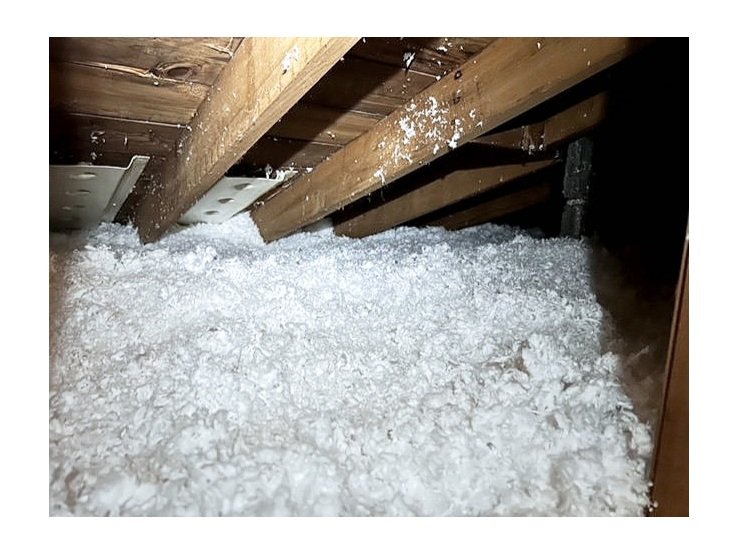Blown-In Fiberglass Insulation
Blown-in fiberglass is comprable to blown-in cellulose insulation. This is a great option for new attic insulation or adding on top of your existing insulation (capping). This product is more expensive than cellulose but it tends to be cleaner. This is a very good option when your home has HVAC or duct work in the attic assembly for this reason. Fiberglass offers more long-term protection against mold and mildew growth. Additionally, blown fiberglass has a longer life span than that of cellulose. It does not settle or degrade over time. While cellulose is made of over 85% recycled material, fiberglass consists of 20-30%. Blown-in fiberglass for attic insulation will create a seamless application. This is advantageous as compared to fiberglass batts or rock wool because it covers the trusses to prevent thermal bridging and does not have any gaps or cracks.
When deciding between blown-in fiberglass vs blown-in cellulose for your attic insulation the main considerations are duct work, moisture, and access. If your home has ductwork in the attic assembly, fiberglass may be the best option to prevent dust from cellulose from making its way into your home. If your home has bathroom vents improperly vented into the attic it might be a good idea to go with the fiberglass option to better prevent mold / mildew. Lastly, if you use your attic for storage and access it frequently, blown-in fiberglass may be your better option for attic insulation since it is a cleaner, less dusty product. Cellulose performs better in colder temperatures so if these are not a concern the cheaper option may actually be the better option!

